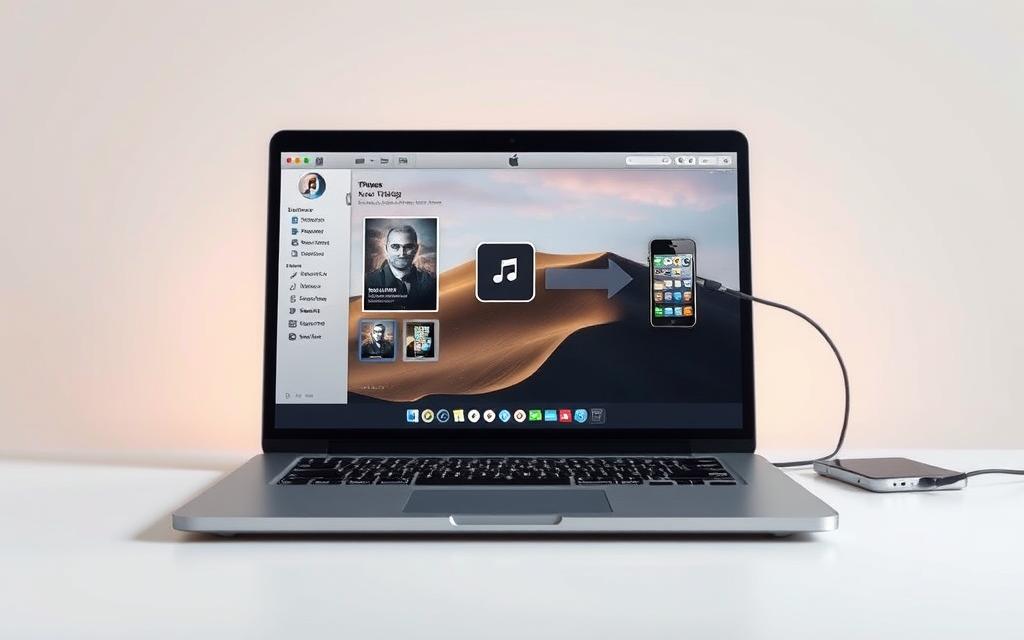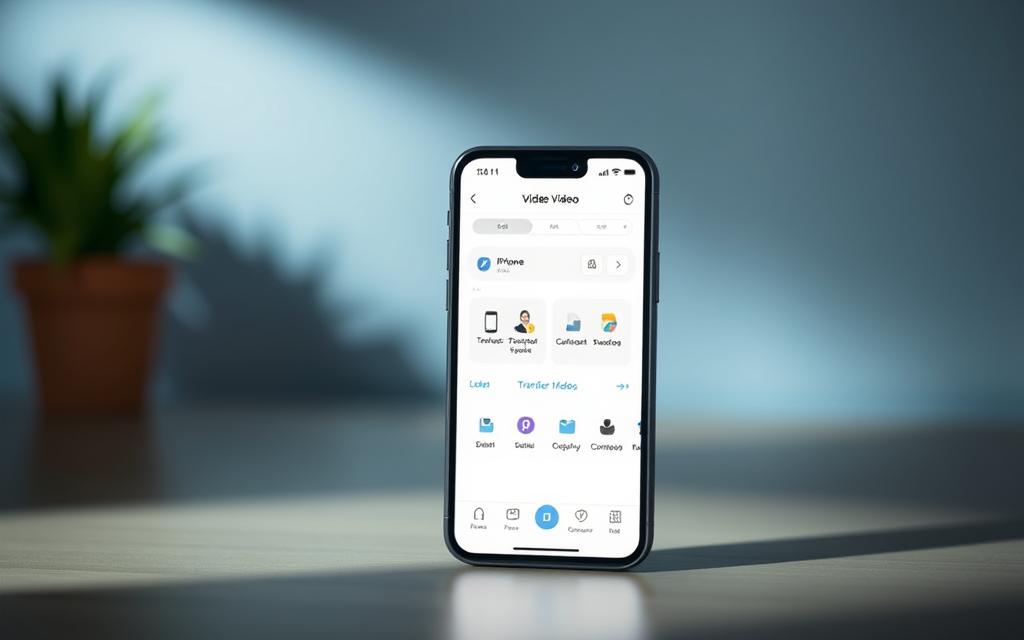Table of Contents
Moving files between a computer and an iPhone can feel tricky, especially with Windows and iOS compatibility issues. Many users struggle to find the right method to ensure smooth transfer without losing quality or speed.
Fortunately, there are multiple ways to get the job done. Options include using a USB cable, syncing with iTunes, leveraging iCloud Drive, or relying on third-party apps like MobileTrans. Cloud services also offer a seamless solution for files of any size.
Among these, MobileTrans stands out with its 4.5/5 user rating and over 4 million downloads. It’s designed to handle videos iPhone transfers efficiently, ensuring file quality and compatibility with the latest iOS versions. Whether you’re a tech novice or a pro, these methods save time and simplify the process.
How to Send a Video from PC to iPhone Using USB Cable
Using a USB cable is one of the most reliable methods for file transfers. It ensures a direct connection between your iPhone and computer, making the process quick and secure. This method is particularly useful for moving photos videos without compromising quality.
Step 1: Connect Your iPhone to the Computer
Start by plugging your iPhone into the computer using a USB-C or Lightning cable. Ensure the cable is in good condition to avoid connection issues. Once connected, your device should appear in the Windows File Explorer.
Step 2: Trust the Computer on Your iPhone
When prompted, tap “Trust This Computer” on your iPhone. This step is crucial for security, allowing your device to share files computer safely. Without this, the transfer process cannot proceed.
Step 3: Locate and Transfer Videos via File Explorer
Open File Explorer and navigate to This PC > [Device Name] > Internal Storage > DCIM. Here, you can select the photos videos you want to move. Right-click and choose “Send to” for batch transfers. Note that videos longer than 15 seconds may not import directly to the Camera Roll.
| Step | Action | Details |
|---|---|---|
| 1 | Connect Devices | Use a USB-C or Lightning cable |
| 2 | Trust Computer | Tap “Trust This Computer” on iPhone |
| 3 | Transfer Files | Navigate to DCIM folder in File Explorer |
For more advanced options, consider using third-party software like iMazing, which enhances USB transfer capabilities. Always ensure your video files are in compatible formats (MP4, MOV, M4V) for seamless transfer files iphone.
Transfer Videos from PC to iPhone with iTunes Sync
iTunes Sync offers a straightforward way to manage your media files. This method ensures your photos videos are organized and accessible on your device. With its built-in support for iOS 4 and above, iTunes remains a reliable app for file transfers.

Setting Up iTunes for File Sharing
First, ensure your iTunes version is 12.12.2 or higher. Connect your iPhone to the computer using a USB cable. Open iTunes and select your device from the menu. Enable Wi-Fi sync for wireless transfers in the future.
Selecting Photos and Videos to Sync
Navigate to the “Photos” or “Movies” tab in iTunes. Choose specific folders or your entire library for transfer photos videos. Ensure your files are in MP4, MOV, or M4V formats for compatibility. This step prevents sync failures.
Finalizing the Transfer Process
Click the “Apply” button to start the itunes sync. Monitor the progress bar to ensure successful completion. If issues arise, reboot both devices or update drivers. Manage storage to avoid interruptions during large transfers.
| Step | Action | Details |
|---|---|---|
| 1 | Set Up iTunes | Ensure version 12.12.2+ |
| 2 | Select Files | Choose folders or entire library |
| 3 | Initiate Sync | Click “Apply” to start transfer |
iTunes Sync is a trusted method for transfer photos videos between your computer and iPhone. Its seamless integration and support for various formats make it a top choice for users.
Use iCloud Drive to Move Videos Wirelessly
iCloud Drive simplifies wireless file transfers between devices. It’s a reliable solution for moving media files without cables. With its seamless integration across computer iOS systems, it’s perfect for users who want transfer files quickly and efficiently.
Uploading Videos to iCloud from Your Computer
Start by accessing iCloud.com through a web browser like Chrome, Edge, or Firefox. Log in with your Apple ID and navigate to the iCloud Drive section. Use the upload button to add files directly from your computer.
For batch uploads, hold the CTRL or Shift key to select multiple files. Ensure your videos are in HEIC or HEVC formats for optimal storage and compatibility. The free 5GB limit is sufficient for smaller files, but larger collections may require a paid plan.
Accessing Files on Your iPhone
Open the Files app on your iPhone to view uploaded videos. Navigate to iCloud Drive and locate your files. Tap to download and save them directly to your device.
For better organization, use the Photos app for media files. This ensures smooth syncing across all your Apple devices. Paid storage plans, like 50GB for $0.99 or 200GB for $2.99, are ideal for 4K video transfers.
| Feature | Details |
|---|---|
| Free Storage | 5GB limit |
| Upload Method | Browser-based via iCloud.com |
| File Formats | HEIC, HEVC, MP4, MOV |
| Paid Plans | 50GB/$0.99, 200GB/$2.99 |
iCloud Drive is a versatile tool for wireless file transfers. Its user-friendly interface and robust storage options make it a top choice for Apple users.
Third-Party Apps for Seamless Video Transfers
Third-party apps provide a versatile solution for transferring media files between devices. They offer advanced features and flexibility, making them ideal for users who need efficient transfer options. Among these, MobileTrans stands out as a top choice for managing transfer data across platforms.

Why MobileTrans Is the Best Choice
MobileTrans is a powerful tool designed for seamless file transfers. It supports over 18 file types and works across 6,000+ devices. Its 1-click WhatsApp migration feature simplifies the process, saving time and effort.
Key benefits include:
- Fast performance: Transfers 1,000 photos in just 8 minutes.
- Dual functionality: Enables PC-to-iPhone and iPhone-to-PC transfers.
- DRM-free video transfers: Ensures compatibility for personal media.
- Error recovery: Resumes interrupted transfers without data loss.
Compared to alternatives like iMazing and AnyTrans, MobileTrans offers unmatched support and ease of use.
Step-by-Step Guide Using MobileTrans
Start by downloading and installing MobileTrans on your computer. Connect your iPhone using a USB cable. Launch the app and select the “Phone Transfer” option.
Choose the files you want to transfer, such as videos, photos, or documents. Click “Start” to initiate the process. MobileTrans ensures an efficient transfer with minimal user input.
Once completed, disconnect your device and verify the transferred files. MobileTrans’s intuitive interface and robust support make it a reliable choice for all your transfer data needs.
Cloud Storage Services as an Alternative
Cloud storage services provide a flexible and efficient way to manage and transfer media files. They eliminate the need for cables and offer seamless access across devices. Whether you’re working with large video files or need to download files iPhone quickly, these platforms are a reliable solution.

Uploading Videos to Google Drive or Dropbox
Google Drive and Dropbox are two of the most popular cloud storage services. Google Drive offers 15GB of free storage, making it ideal for smaller files. Dropbox, on the other hand, provides Smart Sync features to manage storage efficiently.
To upload videos, simply drag and drop files into the web interface or use the desktop app. For 4K content, adjust compression settings to maintain quality. Shared folder collaboration features allow multiple users to access and edit files securely.
Downloading Files to Your iPhone
Once uploaded, accessing your files on an iPhone is straightforward. Open the Google Drive or Dropbox app and navigate to the desired folder. Tap the download icon to save files directly to your device.
For offline access, enable the offline mode in the app settings. This ensures you can view videos without an internet connection. Third-party players like VLC or Infuse can enhance playback for unsupported formats.
| Feature | Google Drive | Dropbox |
|---|---|---|
| Free Storage | 15GB | 2GB |
| Offline Access | Yes | Yes |
| Shared Folders | Yes | Yes |
| Security | 2FA, Encryption | 2FA, Encryption |
For more insights on the best cloud storage software options, check out this comprehensive guide. These services ensure your files are secure, accessible, and easy to manage.
Conclusion
Choosing the right method for transferring media ensures a smooth and hassle-free experience. USB cables offer the fastest transfer speed, while iCloud Drive is slower but convenient for wireless access. All methods maintain data integrity, ensuring your photos videos remain intact during the process.
MobileTrans stands out with features like no quality loss and batch processing, making it ideal for large transfers. For emergencies, tools like iTunes Sync and third-party apps provide reliable solutions for corrupted files.
For efficient transfer, prioritize USB for speed, iCloud for wireless convenience, and MobileTrans for advanced features. Each method suits different needs, ensuring your device and computer work seamlessly together.
FAQ
Can I transfer videos from my computer to iPhone using a USB cable?
Yes, you can. Connect your iPhone to the computer using a USB cable, trust the computer on your device, and use File Explorer to locate and transfer the videos.
How does iTunes sync help in transferring videos?
iTunes sync allows you to set up file sharing, select the photos and videos you want to transfer, and finalize the process by syncing your iPhone with the computer.
Is iCloud Drive a good option for wireless transfers?
Absolutely. Upload your videos to iCloud Drive from your PC, then access them on your iPhone through the iCloud Drive app.
Are there third-party apps for transferring videos?
Yes, apps like MobileTrans offer seamless transfers. They provide a user-friendly interface and step-by-step guidance for moving videos from your computer to your iPhone.
Can I use cloud storage services like Google Drive or Dropbox?
Definitely. Upload your videos to Google Drive or Dropbox from your PC, then download them to your iPhone using the respective apps.
What if I don’t want to use iTunes or iCloud?
You can rely on third-party apps or cloud storage services as alternatives to iTunes and iCloud for transferring videos.
Do I need special software to transfer files?
While iTunes and iCloud are built-in options, third-party apps and cloud services may require downloading specific software or apps for smooth transfers.
How do I ensure my iPhone recognizes the computer during USB transfer?
When prompted on your iPhone, tap “Trust This Computer” to establish a secure connection for file sharing.









